After months of watching them grow, they’re finally getting ripe. Some mangos turn bright beautiful colors, but others stay green or yellow. One sure sign a mango is ready is clear sap dripping down the side.
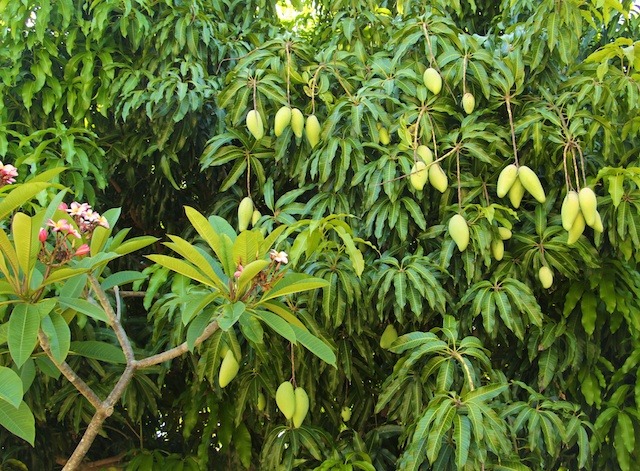
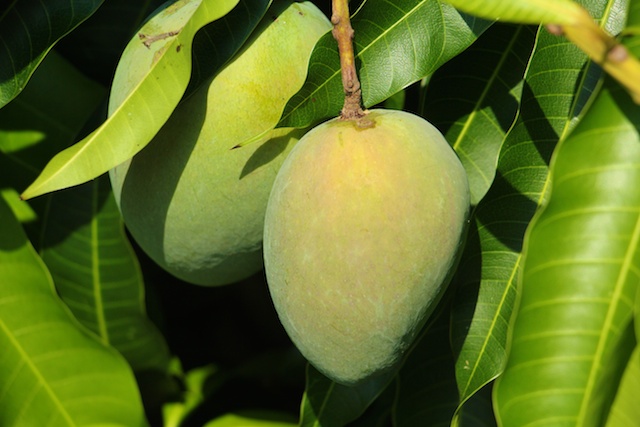
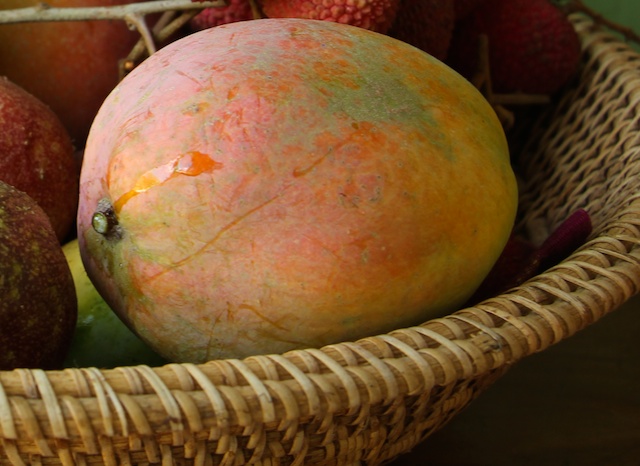
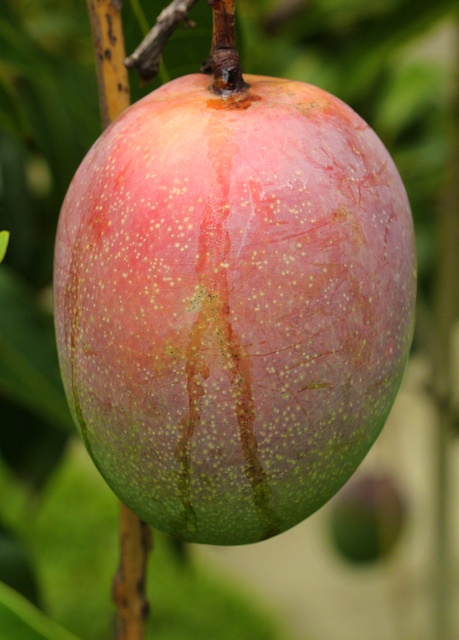
I like to pick mangos at this point and bring them inside to finish ripening. I do this for two reasons: First, a really ripe mango will fall off the tree and get bruised. The bruised area rots, which ruins a big part of the mango. Second, the longer you leave them beyond this point, the more likely they are to be eaten by a squirrel, raccoon or opossum. They will take one bite of each mango on the tree just to aggravate a human.
You can find lots of gadgets to help keep critters away. If you’ve only got a squirrel or two, you can use a Havahart trap. There are also motion-sensor sprinklers. This motion-sensor owl has illuminated eyes and it hoots, which might scare them away. But this year I learned a clever method from some friends. You know the containers strawberries come in? They’re called ventilated clamshells. Clip them over the mango like this: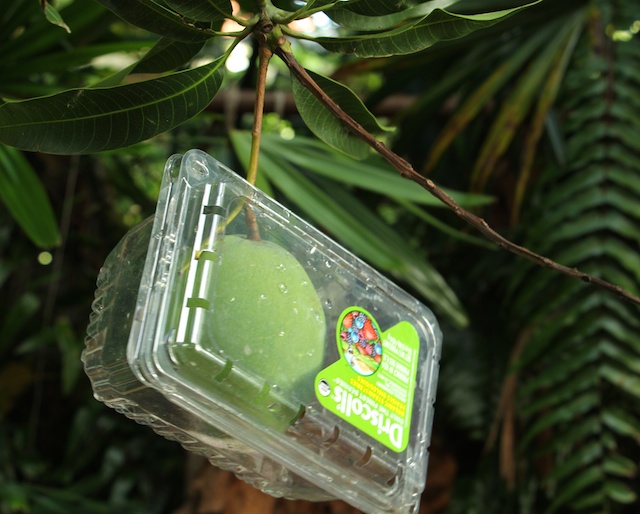
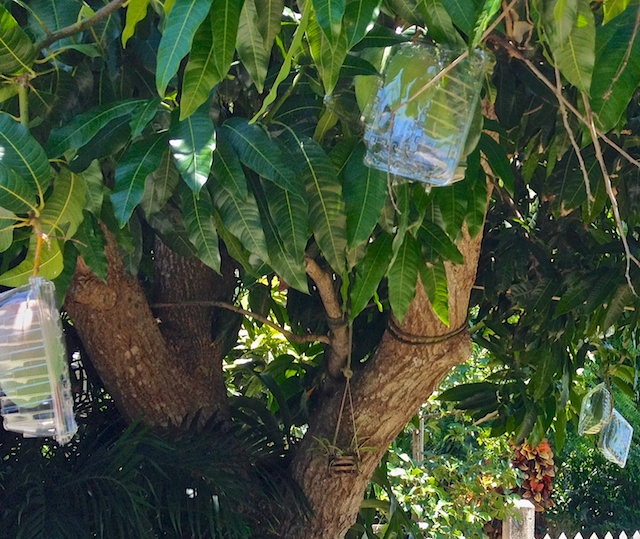 My neighbors think I’ve lost my mind, but it’s working well so far. I admit it’s not the most attractive look for the tree. But there’s one more neat thing about this method: if the mango drops, it gets caught in the clamshell and doesn’t hit the ground. If you need a lot, you can order ventilated clamshells online in various sizes.
My neighbors think I’ve lost my mind, but it’s working well so far. I admit it’s not the most attractive look for the tree. But there’s one more neat thing about this method: if the mango drops, it gets caught in the clamshell and doesn’t hit the ground. If you need a lot, you can order ventilated clamshells online in various sizes.
Have a pest-free mango season, and beware the dreaded Mango Rash.

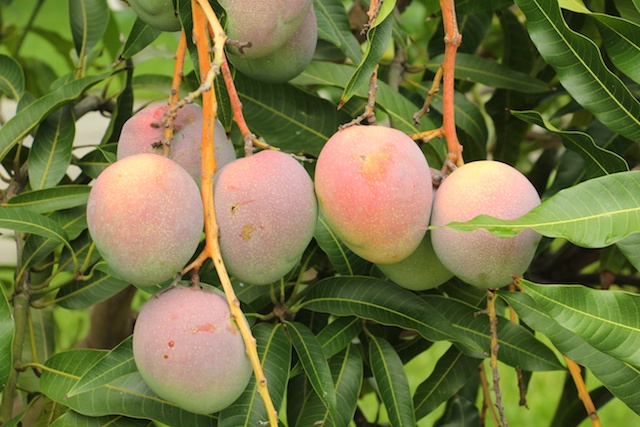
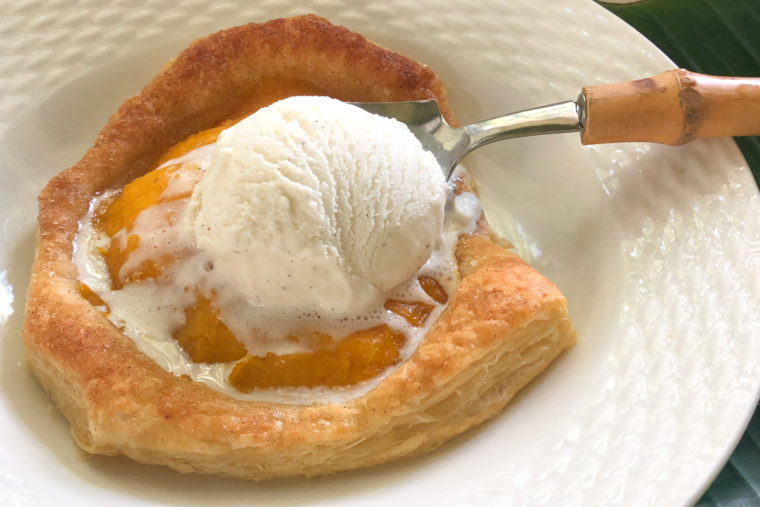
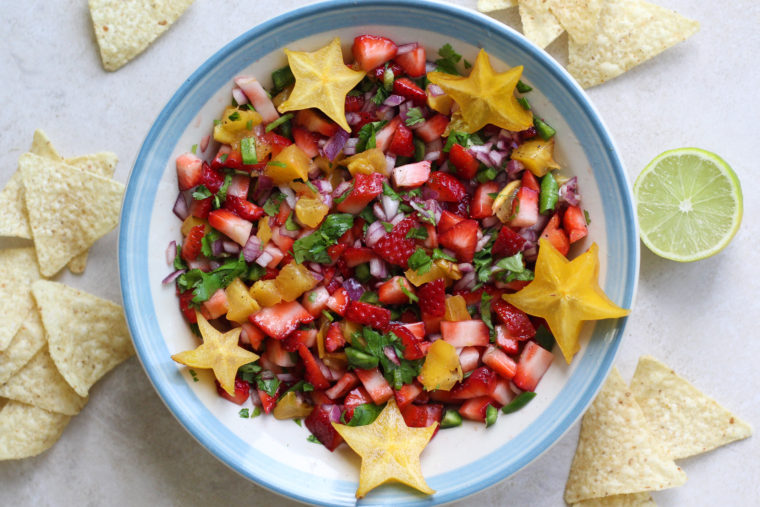

Pingback: Key Lime Pie Mango Lassi | Suwannee Rose
Pingback: Mango Season: A Field Guide | Suwannee Rose
Pingback: Pinecone Suet | Suwannee Rose
i want to buy this seed and plant in india.